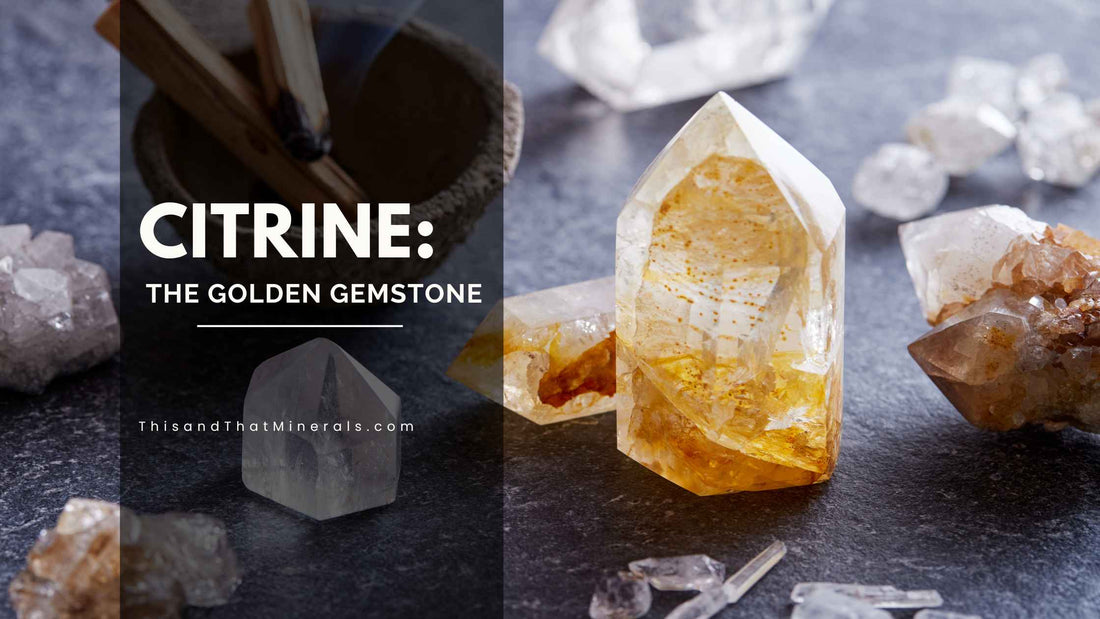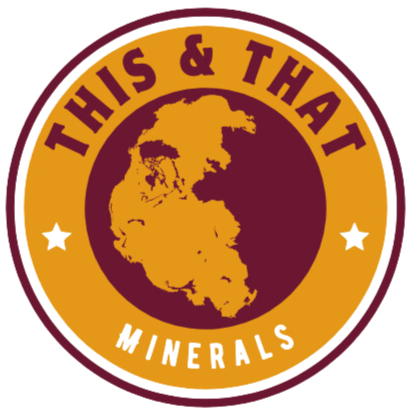
Citrine: The Golden Gemstone
With its warm golden hues, Citrine has long been cherished for its beauty and radiant energy. Whether you're a seasoned crystal collector or just beginning your journey into the world of gemstones, citrine is a must-have in any collection. Let's discuss how citrine is formed, where it can be found, how it's mined, and its metaphysical properties.
How Citrine Is Formed
Citrine is a variety of quartz, a mineral that forms deep within the Earth’s crust. As it grows, it gets its distinctive golden-yellow to amber color from trace amounts of iron embedded within the quartz. The exact shade of citrine can vary depending on the concentration and distribution of iron impurities.
Natural citrine is relatively rare compared to other forms of quartz. Citrine often found on the market results from heating amethyst or smoky quartz, which alters its color to mimic natural citrine. This heat treatment occurs naturally on the Earth or artificially by humans to meet the growing demand for the gem.
Read more about citrine and it's geological formation.
Where Citrine Can Be Found
Citrine can be found in several regions across the globe, although large deposits are relatively scarce. Some of the primary sources of citrine include:
- Brazil: Brazil is the largest source of natural citrine, particularly in Rio Grande do Sul and Minas Gerais.
- Russia: The Ural Mountains have long been known for producing high-quality citrine.
- Madagascar: This island nation is home to some of the most brilliant natural citrine crystals.
- United States: Though less common, citrine has been found in Colorado and North Carolina.
Brazil's prominence in the citrine market is due to its extensive quartz deposits, where natural citrine forms in hydrothermal veins within the Earth’s crust. Madagascar is another notable supplier, with mines producing gem-quality citrine crystals that collectors highly seek after.
How Citrine Is Mined
Citrine mining is often a byproduct of more extensive mining operations for amethyst and other quartz varieties. The mining process begins by locating quartz-rich areas, often deep underground, where natural citrine may form. Here's a breakdown of the steps involved in citrine mining:
- Locating Deposits: Geologists and miners search for quartz veins within host rocks, using geophysical tools to map out potential sites.
- Extraction: Miners carefully extract the rock from the Earth using drills and heavy machinery, avoiding crystal damage.
- Sorting: Once the material is brought to the surface, it is sorted and cleaned. Citrine is separated from other minerals, like amethyst and smoky quartz.
- Heat Treatment (if necessary): When citrine is artificially produced from amethyst or smoky quartz, the material undergoes controlled heating to change its color.
Due to the delicate nature of the crystals, mining citrine requires precision and care. Mining regions also often employ local communities, contributing to the economic livelihood of those areas.
Metaphysical Properties of Citrine
In the metaphysical realm, citrine is known as the "Stone of Abundance" or the "Merchant's Stone." Its vibrant yellow color is said to carry the sun's power, bringing warmth, energy, and a sense of well-being to those who wear or work with it.
Fundamental metaphysical properties of citrine
- Abundance: Citrine is believed to attract wealth, success, and prosperity, making it a popular stone for business owners and entrepreneurs.
- Energy Boost: Its bright energy promotes motivation and creativity, helping individuals manifest their goals.
- Emotional Balance: Citrine is thought to help dispel negative emotions and replace them with positivity, encouraging optimism and joy.
- Chakra Alignment: Citrine is closely associated with the Solar Plexus Chakra, which governs personal power, confidence, and clarity.
Because of its connection to abundance and vitality, citrine is often placed where people seek increased energy flow or financial gain, such as workspaces, homes, or cash registers.
Read more about citrine's meaning, healing properties, and uses.
Conclusion
Whether admired for its striking golden beauty, coveted for its rarity, or cherished for its metaphysical properties, citrine remains a beloved gemstone worldwide. Its unique formation process, rich geographic diversity, and positive energy make it a must-have for collectors and healers alike.
PIN IT

